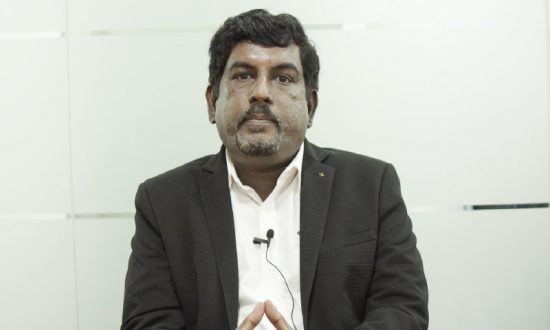Mr. Satyamohan Yanambaka is responsible for executing the business strategy and directing the overall performance and growth of the organization. A proven leader & strategic planner with passion to redefine enterprise standards. Satyamohan has over 25 + years of rich and diversified leadership experience in many large multinational corporations such as HCL Technologies, Oracle, State Bank of India and Mahindra Satyam.
As organizations continue to increase their digital adoption, cyber criminals have increased their efforts to exploit the infrastructure vulnerabilities that accompany this rapidly expanding digital ecosystem. One of the major reasons for acceleration of digital adoption is the rise in number of remote workers and the work from home trend which has suddenly got a boost due to COVID-19 pandemic. The addition of billions of workers who now access organizations’ data from remote places all over the world has increased the number of endpoints which are vulnerable to cyber-attacks. The old infrastructure of the endpoints, older operating systems and just the sheer numbers and physical locations of the endpoints has made the job of the data security experts extremely complex and daunting.
In simple words, ransomware is a malicious software that does not allow you to access your own data or could lock your entire system. It may also steal, delete or encrypt your data.
In 2021, a ransomware attack happens every 11 seconds across the globe, and in India we see 375 cyber-attacks every day.
As per a Gartner report, by the year 2025, 3 out of every 4 organizations will face one or more cyber-attack. Across the globe, businesses will pay a projected $20 billion in ransom, which is 57 times more than in 2015. The real cost of cybercrime is more than $6 trillion once we include the overall cost of recovery including data restoration as well as infrastructure, applications and business recovery. In addition to that there are hidden costs such as loss of reputation, impact on brand and customer sentiments towards the organisation which could impact its future financial growth.
Today’s organizations rely a lot on data, and that is exactly what ransomware attackers are after. The choice of paying a ransom is risky and may not be the best way to recover out of an attack. CyberEdge Group survey reports that less than half of organizations who paid a ransom could recover their files.
To avoid situations where organizations need to pay a ransom, decision-makers must focus their attention on evaluation of cyber security solutions including backup and recovery solutions, ransomware detection solutions, endpoint security solutions for protection and accelerated recovery. Organizations must also assess their readiness in terms of recovery planning. It is critical to have well-documented recovery plans with proper workflows and responsibilities assigned to various roles detailing how your organisation will respond once an attack happens.
While the reactive or corrective measures are important to ensure that your organisation recovers fast from the ransomware attack when it happens, preventive measures are equally critical to be put in place. Preventive measures are required to close security gaps by creating a current-state and target-state of maturity and initiatives to close the gaps. You can also prioritise the initiatives using factors such as effort, cost, risk, and business impact.
Neo ransomware targets to steal valuable data from victim organisation’s systems and sometimes encrypts it thereby preventing the users to access their own data. This gives the attackers an opportunity to demand ransom for returning the data. The attacker threatens to share the data in public domain thereby compromising organisation’s reputation and their competitive strength. The neo attackers are more precise and are fully involved in the attack as they entrench themselves in the organisation’s network through advanced persistent threat attacks unlike the traditional ransomware attacks. It is important to note that any type of infrastructure can be disrupted by a ransomware attack —whether an organisation uses on-premises or hosted infrastructure on a public/ private cloud. While organizations have gone ahead with accelerating digital adoption, they have created complex networks and systems thereby creating huge challenges in preventing zero-day attacks and file-less attacks. To enable proactive prevention, the key asks from the organizations are – managing effective cyber security, simplifying the technology stack and improving system performance.
Cybersecurity requires a new integrated approach with a ‘Prevention First’ philosophy. Without a fundamental change in the cybersecurity strategy, attackers will continue to prevail against security teams who are constantly playing catch up. Neo attackers have a unique strategy of constantly and unpredictably changing their attack methodology to target predictable detection-based security solutions.
Organizations must implement purpose-built and proactive preventative techniques to prevent unknown and unpredictable threats at early stages of attacks before they can cause any damage to enterprise systems. These new solutions have the following benefits:
- Protect organisation data.
- Prevent unauthorized user access.
- Reduce complexity of IT systems.
- Accelerate recovery time after a breach.
- Improve business continuity.
- Improve confidence in organisation’s reputation.
In the new normal, after COVID-19 pandemic has hit the world, Work From Home (WFH), or even more prevalent – Work From Anywhere (WFA) has brought in new challenges.
A data breach through ransomware attack is one of the three most common ways to impact the organisation’s reputation in addition to poor customer service and environmental incidents. CXOs now have very specific needs for Cybersecurity and Privacy Compliance. As well as, proactive approach to address the new challenges and needs is much required to keep the organizations on the forefront of growth and sustainability.






